#mppt charger
Explore tagged Tumblr posts
Text

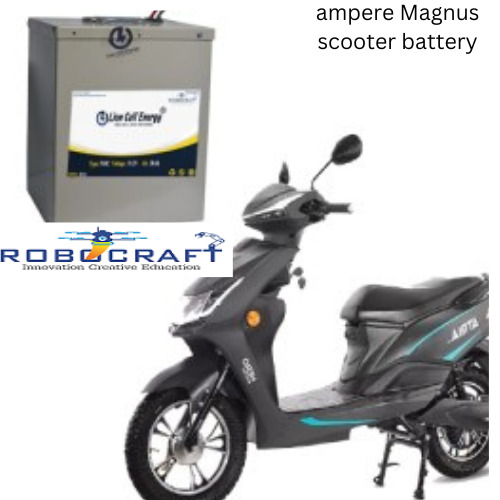



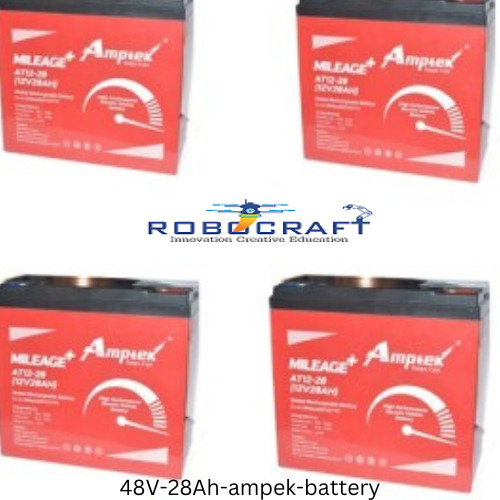
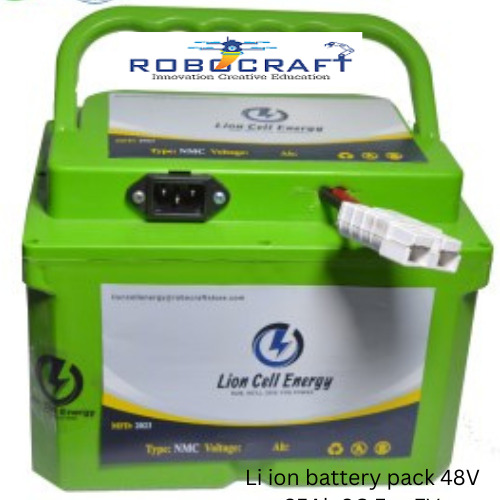

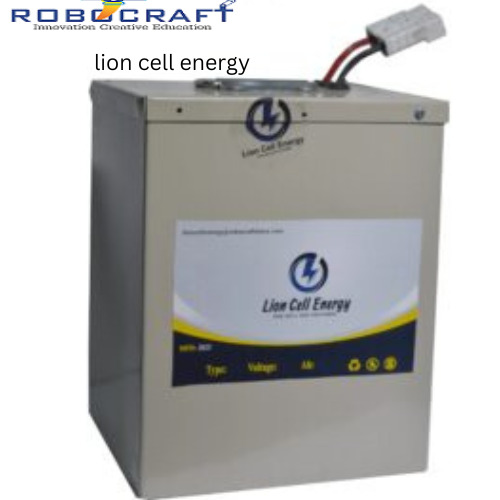
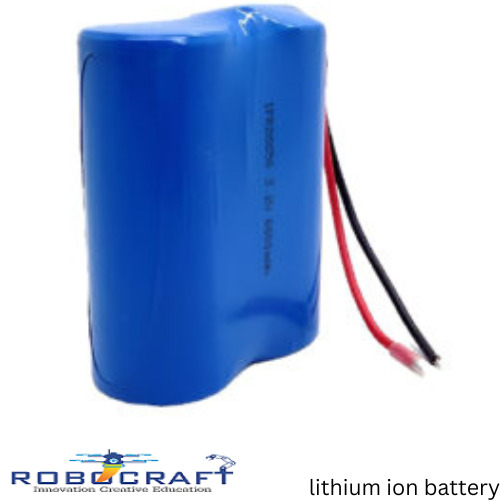




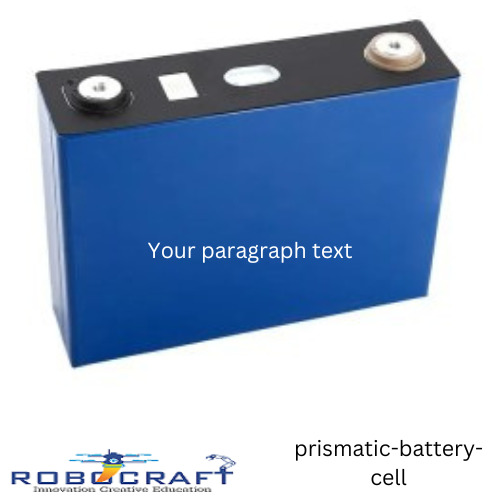

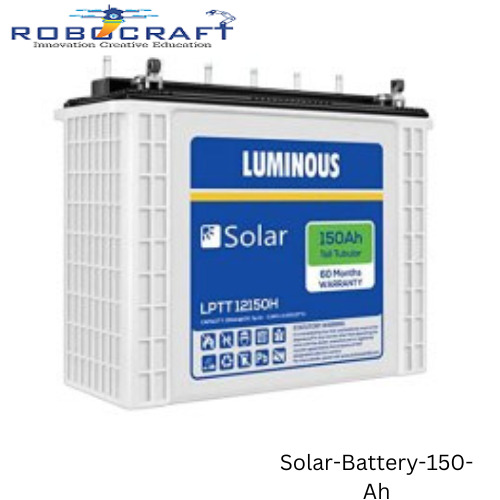
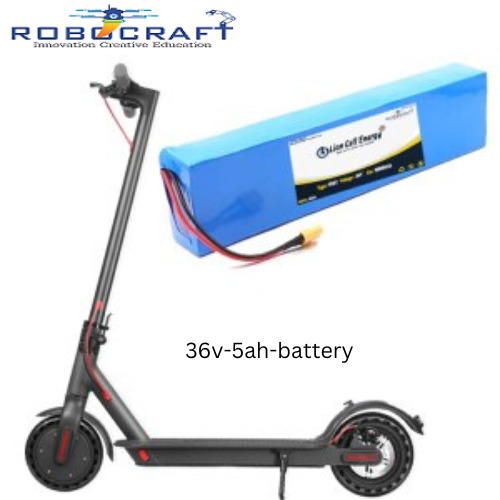
#lithium ion battery#electrical vehicle battery#electrical vehicles battery#lithium battery charger#solar mppt controller#electric vehicles spare part#e bike batteries#ebike motor#electric bike charger#electric vehicles charger
0 notes
Text
RV Solar System: How to Go Off-Grid with Panels and Batteries
The RV solar power supply system is the core equipment for achieving "off-grid freedom". Solar energy is converted into electrical energy through solar panels, and then it is used to power on-board electrical appliances (such as refrigerators, air conditioners, lighting, etc.) after solar batteries and regulation. It is particularly suitable for long-distance camping, outdoor adventures and other scenes with unstable power environment. Although the system structure looks simple on the surface, it is necessary to take into account power generation efficiency, solar battery capacity and space adaptability in design and actual application.
This article will analyze the key contents of the RV solar power supply system in detail from three aspects: system core components, design points, and use and maintenance.
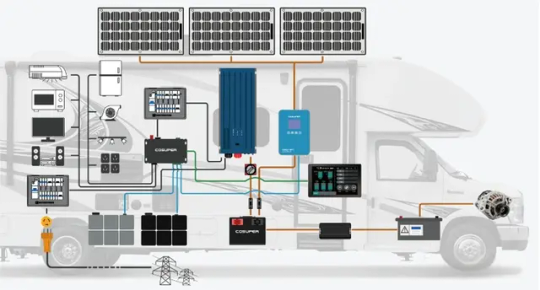
1. System Core Components
The RV solar power supply system is usually composed of four modules: power generation, energy storage, control, and power consumption. The performance of each component directly determines the power supply stability and reliability of the entire system:
1.1 Solar Panels
1.1.1 Function:
-Converts light energy into direct current
1.1.2 Common types and suitable scene selection
- Monocrystalline silicon panels: high efficiency (18%-23%), suitable for rooftop paving;
- Flexible panels: bendable, suitable for curved roofs, slightly lower efficiency (15%-18%)
1.2 Solar Batteries
1.2.1 Function:
-Store electricity for use on cloudy days or at night
1.2.2 Common types and suitable scene selection
- Lithium battery (lithium iron phosphate): lightweight, long cycle life (3000 times +), suitable for frequent charging and discharging;
- Lead-acid battery (colloid/maintenance-free): low cost, slightly better low temperature performance, but heavy and short life (300-500 times)
-Charge and discharge rate (RV recommended 1C and above)
Brovolt's 12V/24V lithium iron phosphate (LiFePO₄) battery has high energy density, long cycle life, excellent safety and excellent temperature control adaptability, making it an ideal on-board energy storage solution.
-High energy density, light and space-saving: suitable for limited RV storage space, easy to install under seats, trunks and other locations.
-Ultra-long life ≥ 3000 cycles: compared with lead-acid batteries, the service life is increased by 4~6 times, especially suitable for solar energy systems with frequent charging and discharging.
-Safe and stable: using lithium iron phosphate cells, good thermal stability, support large current charging and discharging, with BMS (battery management system) multiple protection.
-Optional 12V/24V multiple voltage platforms: meet different system design requirements
-Support parallel expansion: flexibly build 1~5kWh energy storage units to meet different travel lengths and electrical loads.
1.3 Solar Controller
1.3.1 Function
-Regulate the charging process to protect the battery from overcharge/overdischarge
1.3.2 Common types and suitable scene selection
- PWM controller: simple structure, low cost, suitable for low-power systems (≤300W);
- MPPT controller: tracks the maximum power of the solar panels, high efficiency (90%-97%), suitable for high-power systems (≥500W)
-Rated current (≥1.2 times the total current of solar panels); whether with temperature compensation / USB output
1.4 Inverters
1.4.1 Function
-Convert direct current (12V/24V) to alternating current (220V)
1.4.2 Common types and suitable scene selection
- Modified wave inverter: drives low-power resistive appliances (light bulbs, mobile phone chargers);
- Pure sine wave inverter: adapts to inductive loads such as refrigerators and air conditioners to avoid equipment damage
-Continuous power (≥ total power of all electrical appliances); peak power (to cope with instantaneous power when the motor starts)
2. Analysis of the "full-link" design from power generation to power consumption: customized on demand, balancing "power generation-energy storage-space" .
The roof area of RVs is limited (usually 3-6 square meters). When designing the system, it is necessary to reasonably configure it according to the actual power demand and the body structure to avoid "power redundancy wastes space" or "insufficient power supply affects the experience".
2.1. Clarify the daily electricity demand and calculate the "electricity bill" first
Statistic the power and usage time of common electrical appliances:
-12V car refrigerator (50W, 8 hours of work per day) = 0.4kWh
-220V laptop (60W, 4 hours of use) = 0.24kWh
-Add LED lights, mobile phones, camera charging, etc., the total daily energy consumption is about:
-Light use: 1-2kWh/day
-Heavy use (including air conditioners, induction cookers, etc.): 3-5kWh/day
2. 2 Calculate the power of solar panels to ensure power generation needs
Considering the power generation efficiency decreases on cloudy days (only 30%-50% of sunny days), it is recommended that the total power of solar panels be configured according to the following formula:
Total power = average daily energy consumption × 1.5 ÷ effective sunshine duration (hours)
Example:
-Average daily power consumption 3kWh, effective sunshine 4 hours
-Required PV module power = 3×1.5÷4 ≈ 1125W
-Optional configuration: 300W×4
2.3 Configure battery storage system to ensure power supply at night and on cloudy days
The battery capacity needs to meet the power supply requirements for 2-3 consecutive days:
For example, if the daily power consumption is 3kWh, use 12V system:
Battery capacity = 3×2 ÷12V = 500Ah
Or choose 24V system: 250Ah (the higher the voltage, the smaller the line loss)
2.4 Optimize the installation position based on vehicle space
Lithium batteries are small and can be flexibly placed under seats, in the trunk, etc.
Lead-acid batteries are heavy and are recommended to be installed on the chassis or at the center of gravity to avoid the center of gravity shifting during vehicle driving.
It is recommended that photovoltaic panels be laid flat in an unobstructed area (such as between air conditioners and skylights), with an inclination angle close to the latitude (such as 30° at 30° north latitude) to improve the power generation efficiency at noon.
If the roof area is insufficient, you can use:
Retractable photovoltaic panels (unfolded when parking, folded when driving);
Foldable portable panels (used for temporary parking and charging).
3. Usage and Maintenance Guide: Key Details to Improve System Efficiency and Extend Life
RV solar generator systems are exposed to complex outdoor environments such as vibration, high temperature difference, and dust for a long time, so regular maintenance is required:
3. Usage and Maintenance Guide: Key Details to Improve System Efficiency and Extend Life
RV solar generator systems are exposed to complex outdoor environments such as vibration, high temperature difference, and dust for a long time, so regular maintenance is required:
3.1 Solar panel maintenance: maintain efficient power generation
-Clean dust and bird droppings on the panel surface every week (especially after rainy days)
-Clean up snow and fallen leaves in time
-Check the wiring interface to avoid loosening or oxidation caused by vibration
-The wiring terminal is sealed with waterproof glue, and the MC4 plug is protected with waterproof paste
A 10% blocked area may cause the power generation efficiency to drop by up to 50%.
3.2. Battery storage maintenance: extend battery life (combined with climate conditions)
Temperature management: lithium-ion batteries are afraid of high temperatures (>40℃), and low temperatures will affect the capacity of lead-acid batteries; Recommendations:
-Avoid heat sources such as engines and exhaust ports
-Use battery insulation devices or choose low-temperature resistant batteries in winter
Charge and discharge management:
-The remaining power of lithium-ion batteries should be ≥10%, and that of lead-acid batteries should be ≥30%
-When parked for a long time, the power should be maintained at 50%-60%, and recharged every 2 weeks
3.3 Check the operation of the solar controller and inverter
-Check the display interface of the controller to confirm whether the charging mode is "equalized charge" or "floating charge"
-Clean the dust from the heat dissipation holes of the controller to avoid overheating
-If the controller has an "overcharge protection" alarm, check whether the total photovoltaic power exceeds its rated value
-When using the inverter, avoid long-term full-load operation; turn off the inverter in time after turning off the electrical appliances to prevent no-load power consumption.
3.4 Advanced optimization plan: realize stable, safe and efficient off-grid life
Multi-source complementary power supply system:
-Add AC charging module and driving generator interface
-When solar power is insufficient, the power can be supplemented by vehicle operation or external power supply to build a "solar-vehicle-electricity" three-element complementary system
Optimize power usage habits:
-Prioritize the use of 12V native DC appliances, such as LED lights and car refrigerators
Reduce conversion losses during DC to AC conversion
-High-power equipment (such as microwave ovens and induction cookers) is recommended to be used during the peak power generation period at noon to avoid over-discharging the battery
Conclusion: Let "sunshine energy" truly serve travel life
The core concept of the RV solar power supply system is "configuration on demand, meticulous maintenance". A well-designed system can meet more than 80% of daily electricity needs, greatly reducing dependence on camp power supply, and achieving true freedom of travel.
Whether it is a short weekend trip or a long-distance cross-border trip, as long as the use strategy is adjusted according to the environment and the status of system components is checked regularly, "sunshine" can become a reliable and stable mobile energy source, making RV life more secure and free.
0 notes
Text
Semi Smart BMS for Inverters, E-Vehicles & Energy Storage Systems
As lithium battery adoption grows rapidly across homes, industries, and mobility, Battery Management Systems (BMS) are essential to ensure the safety, performance, and life of these energy packs. However, not all applications require fully connected or Bluetooth-enabled systems. That’s where Semi Smart BMS solutions by Lithion Power come in—designed to deliver core protections and performance at an affordable price point.
🔋 What is a Semi Smart BMS?
A Semi Smart BMS bridges the gap between basic protection boards and fully Smart BMS units. It provides:
✅ Over-voltage and under-voltage protection
✅ Over-current and short circuit protection
✅ Temperature monitoring
✅ Passive cell balancing
✅ LED indicators or relay signal output
Unlike full Smart BMS, it does not include app-based monitoring or advanced communication protocols, making it simpler, more cost-effective, and perfect for everyday lithium battery systems.
🏠 Applications Across Power Platforms
1. Home Inverter Systems
Replaces lead-acid with lithium batteries (typically 4S to 16S)
Ensures safe charging/discharging of Li-ion or LiFePO₄ batteries
Protects against overdraw and overheating during power cuts
Compatible with 12V and 24V inverter setups
2. E-Vehicles
Ideal for e-bikes, e-rickshaws, and low-speed electric vehicles
Supports battery packs up to 60V and 200A
Provides safe operation under acceleration, braking, and charging
Built to handle vibrations and outdoor conditions
3. Energy Storage Systems (ESS)
Perfect for solar home batteries or off-grid setups
Helps balance cell voltage to extend life
Works seamlessly with MPPT chargers and DC inverters
Operates reliably in remote, dusty, or hot environments
🔑 Key Features of Lithion Power Semi Smart BMS
Feature
Details
Supported Battery Packs
4S to 24S (12V to 86.4V nominal)
Current Range
10A to 200A, depending on model
Balancing Type
Passive balancing for long-term cell health
Indicators
LED or external relay signal
Temperature Protection
Built-in thermal cutoffs
Compact & Robust
Designed for Indian power conditions
🛠️ Model Examples from Lithion Power
Model
Application Area
SS4-100
12V Inverter Systems
SS16-60
48V E-Bikes or Energy Storage
SS12-20
Small solar packs or e-cycles
SS16-200
High-current inverter or solar use
✅ Benefits of Semi Smart BMS
💸 Cost-Effective – Get essential protection without unnecessary extras
⚡ Reliable – Built to work in fluctuating voltage and climate conditions
🔧 Easy to Integrate – Simple wiring, no app setup required
🧩 Customizable – Choose current, cell count, and form factor as needed
🇮🇳 Made in India – Designed for Indian inverters, EVs, and solar needs
🔚 Conclusion
Lithion Power’s Semi Smart BMS is the perfect middle ground—intelligent where it matters and simple where it counts. Whether you’re powering a home inverter, driving an e-rickshaw, or storing solar energy, Semi Smart BMS gives you trusted protection without the complexity of full smart systems.
Power your battery with confidence—choose Lithion Power Semi Smart BMS.

#bms#lithion#battery management system#lithium battery#batterymanagementsystem#lithion power#electricvehicle#ev#lithionpower
0 notes
Text
Top 10 Benefits of MPPT Solar PCU Inverter You Must Know!
As the world shifts toward clean energy, solar power is emerging as a leading solution for sustainable electricity. Among the essential components of a solar power system is the solar inverter, and MPPT (Maximum Power Point Tracking) Solar PCU Inverter stands out as a top performer. Whether you're a homeowner, business owner, or solar enthusiast, understanding the benefits of MPPT technology can help you make smarter energy choices.
In this blog, we’ll dive into the top 10 benefits of MPPT Solar PCU Inverters and why they’re a superior choice compared to traditional inverters.
📌 What is an MPPT Solar PCU Inverter?
MPPT (Maximum Power Point Tracking) is an advanced charge controller technology used in solar inverters. It ensures that the solar panels operate at their optimal power point, extracting the maximum available energy at any given time.
A Solar PCU (Power Conditioning Unit) is an integrated system that combines a solar inverter, charge controller, and grid charger. When you merge MPPT technology with a PCU, you get a smart, efficient, and powerful solar power solution.
✅ 1. Maximum Energy Harvesting
The primary advantage of MPPT technology is that it constantly monitors the solar panel’s voltage and current to determine the maximum power point. It automatically adjusts its input to extract the maximum energy possible—even under varying sunlight conditions.
Compared to PWM (Pulse Width Modulation) inverters, MPPT inverters can improve energy harvest by up to 30%.
✅ 2. High Efficiency in All Weather Conditions
MPPT inverters shine in dynamic weather conditions. Whether it's cloudy, rainy, or partially shaded, the MPPT algorithm adjusts to get the most out of available sunlight.
This means you enjoy stable and uninterrupted performance, even when the environment is less than ideal for solar generation.
✅ 3. Smart Grid Interaction
MPPT Solar PCUs are designed to prioritize solar energy while managing grid and battery power intelligently. Most models allow:
Priority to solar charging
Automatic switching between solar, battery, and grid
Exporting excess energy to the grid (if net-metering is supported)
This not only reduces your electricity bills but also ensures that solar power is utilized first, giving you the best return on your investment.
✅ 4. Longer Battery Life
Since MPPT inverters ensure optimal charging of batteries, they prevent overcharging and deep discharging—two major causes of battery degradation.
The result? Your battery bank enjoys longer life, better performance, and reduced maintenance costs over time.
✅ 5. Wide Input Voltage Range
MPPT inverters can operate over a wider range of solar panel voltages, making them highly adaptable. This flexibility:
Allows more freedom in panel configuration
Supports longer cable runs with less power loss
Works efficiently even if panels are not getting full sunlight
This makes installation more versatile and less constrained by panel placement or roof size.
✅ 6. Advanced Monitoring and Protection
Modern MPPT Solar PCUs come with digital displays, remote monitoring, and a range of protective features, such as:
Overload protection
Short circuit protection
Reverse polarity protection
High/low voltage disconnect
This ensures safety, transparency, and complete control over your solar system.
✅ 7. Eco-Friendly and Cost-Efficient
By maximizing the use of solar energy, MPPT inverters reduce reliance on fossil-fuel-based grid power. This means:
Lower electricity bills
Reduced carbon footprint
Sustainable and green energy consumption
Over time, your investment in an MPPT solar inverter pays off not just financially, but also environmentally.
✅ 8. Compatibility with Lithium and Lead-Acid Batteries
Unlike many traditional inverters, MPPT Solar PCUs are compatible with various battery types, including:
Lithium-ion batteries
Lead-acid batteries
Tubular and gel batteries
This gives users flexibility to upgrade or choose the battery type that best suits their usage and budget.
✅ 9. Ideal for Residential and Commercial Use
MPPT Solar PCU inverters are scalable and available in different capacities, making them suitable for:
Homes
Shops
Offices
Schools
Industrial setups
From a small rooftop system to a large solar plant, MPPT technology ensures maximum output and efficiency.
✅ 10. Better ROI and Faster Payback
While MPPT inverters may be slightly more expensive upfront compared to PWM alternatives, the increased efficiency and energy savings ensure a faster return on investment (ROI).
Over the years, you save more on electricity bills and maintenance, making it a cost-effective long-term solution.
🔧 Real-World Example
Let’s say you have a 2kW solar system installed with both PWM and MPPT inverters:
A PWM inverter might generate 6-7 units/day.
An MPPT inverter could generate 8-9 units/day under the same conditions.
Over one year, that’s an extra 700–1000 units of electricity saved, which directly reduces your grid consumption and bill.
🏁 Final Thoughts
If you’re planning to invest in solar energy, choosing the right inverter is crucial. The MPPT Solar PCU Inverter is a smart, efficient, and future-ready choice for anyone looking to maximize the benefits of solar power.
With advantages like higher energy yield, better battery management, smart load handling, and compatibility with modern batteries, MPPT inverters are a reliable solution for both homes and businesses.
0 notes
Text
Why RMPPT Solar PCU Is Perfect for Indian Homes
Built for Indian Energy Condition
Listen, if you’ve ever lived through a sweaty Indian summer with the fan dying every two hours, you know the struggle is real. Power cuts? All the time. Voltage swings? Oh, absolutely — sometimes it feels like your lights are at a disco. The RMPPT solar PCU? It’s built for this. Not just a fancy inverter; this thing juggles solar, battery, and grid power like a pro, switching without you even noticing. So yeah, even if you’re chilling out in the middle of nowhere or stuck in a half-developed town, you still get reliable backup. No more candlelit dinners unless you want them.
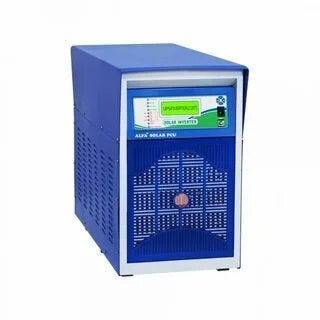
2. MPPT Technology for Maximum Efficiency
Forget those old-school PWM inverters — MPPT is where the real magic happens. Instead of just chilling and taking whatever power the panels give, this thing’s always hustling, tweaking its input nonstop to grab every scrap of energy, rain or shine. Seriously, even when the weather’s being a total diva, it still manages to snag more energy. No wonder people rave about RMPPT models — they’re the overachievers of India’s solar scene.
3. Hybrid Functionality for Greater Flexibility
The real MVP is the RMPPT hybrid PCU inverter. This thing isn’t just playing the part of an MPPT solar charge controller, or an inverter, or a grid charger — it’s all of ’em, smashed into one gloriously geeky gadget. Think Avengers, but with more wires and less spandex. On-grid solar inverter, off-grid, doesn’t even matter — it’s just over here effortlessly swapping between sunlight, your wall socket, and those batteries like it’s flipping pancakes. Coolest multitasker in the room, hands down. So, blackout? Not my problem. This thing keeps the lights on, no matter what drama the grid’s pulling.
4. Intelligent Power Management
The RMPPT Solar PCU knows when to pull energy from where, so you’re not just burning through grid power for no reason. It’s all about squeezing every last drop out of your solar panels first, which, let’s be honest, just makes sense when you see how much solar inverter price in India have dropped lately. Only when the sun isn’t doing its thing does it dip into the battery or the grid. Honestly, it’s like having a little energy nerd living in your house, constantly tweaking things so your bills stay low. For anyone trying to run a home without breaking the bank, this kind of smart energy shuffle is a total game-changer.
5. Comparatively Better Than Traditional Inverters
Regular inverters? They’re kind of basic. They just pull energy from the battery or the grid, and that’s it. Solar PCU, though, is way smarter. It grabs power straight from the sun first, then dumps whatever’s left over into your batteries for later. That means you’re not just running up your electricity bill — you’re saving cash, especially if you’re in this for the long haul. If you want your home to run on solar without the drama, this is the way to go.
6. Affordable and Value-Packed
The solar PCU price in India? Pretty hard to beat, especially when you look at what’s packed in there. You don’t have to shell out extra for stuff like charge controllers or voltage regulators — it’s all baked in already. Toss in those juicy government incentives for going solar, and suddenly, grabbing a hybrid solar inverter for home with an MPPT controller feels like a no-brainer.
7. Easy to Install and Maintain
Is the RMPPT PCU up and running? Barely a hassle. You can just slot it into whatever setup you’ve already got, or start fresh if you’re going all-in on new solar. Maintenance? Practically nothing. This thing’s built tough — like, “laughs in the face of storms” tough — so it’ll keep chugging along for years, rain or shine.
Conclusion
The RMPPT Solar inverter? Honestly, it’s kind of a no-brainer for Indian homes. Power cuts? Sorted. Sky-high bills? Chill, MPPT tech’s got your back, and the hybrid setup just makes it even smoother. Whether you’re tired of sweating through outages or just want to stick it to the electric company, this inverter’s legit.
Thinking about switching to solar? Stop overthinking it. The RMPPT Solar PCU is your ticket to cheaper, cleaner energy — plus, it’s ready for whatever the future throws at you. Wanna geek out more? Hit up Bhoodarsh Saurshakti and, you know, do something good for your wallet and the planet.
0 notes
Text
Exploring the Future of Home Energy with EASUN POWER's Advanced MPPT Charger Inverter
In today's world, harnessing solar energy has become increasingly vital for sustainable living, and EASUN POWER is at the forefront of this revolution with its innovative advanced MPPT charger inverter for home PV systems. This cutting-edge technology ensures that homeowners can maximize their energy production and efficiency.
EASUN POWER's advanced MPPT charger inverter is designed to optimize the energy harvested from solar panels, allowing for greater energy conversion rates. This means that even on cloudy days or during low sunlight hours, homeowners can still benefit from significant energy savings. The inverter’s smart tracking technology adjusts to changing sunlight conditions, ensuring that every ray of sunlight is utilized effectively.
Moreover, EASUN POWER places a strong emphasis on user-friendly features. The inverter comes equipped with a smart monitoring system that allows homeowners to track their energy production and consumption in real-time. This not only promotes awareness of energy usage but also encourages users to make informed decisions about their energy consumption patterns.
In addition to its impressive technical specifications, EASUN POWER is committed to sustainability and eco-friendliness. By investing in solar technology, homeowners not only reduce their energy bills but also contribute to a greener planet. Choosing EASUN POWER’s advanced MPPT charger inverter means choosing a brighter, more sustainable future.
Investing in solar energy is a step towards independence from traditional energy sources and a commitment to environmental stewardship. With EASUN POWER, you can confidently embrace the power of the sun and enjoy the numerous benefits it brings to your home.
#real-time monitoring#renewable energy#sustainable living#EASUN POWER#home PV systems#eco-friendliness#energy efficiency
0 notes
Text
POWOXI 15W MPPT Solar Charger for 12V Batteries | IP65

Introduction
Let’s face it—dealing with dead batteries in your car, boat, RV, or motorbike is a total nightmare. That’s why solar battery maintainers have taken the world by storm. One of the most popular and trusted options out there is the POWOXI 15W MPPT Solar Charger for 12V Batteries.
This little powerhouse is designed to keep your batteries topped off with clean, renewable energy, even when you're off the grid. And with its IP65 waterproof rating, it’s built to survive the elements.
So, is it worth your money? Let’s dive in.
What is the POWOXI 15W MPPT Solar Charger?
The POWOXI 15W MPPT solar charger is a solar-powered battery maintainer tailored for 12V battery systems. Whether it’s a car, motorcycle, RV, boat, or even a fence charger, this device keeps your battery alive and well.
Equipped with Maximum Power Point Tracking (MPPT) technology, this charger ensures your battery receives the highest possible charging efficiency—even in poor lighting.
Understanding MPPT Technology
So, what’s the big deal with MPPT?
MPPT stands for Maximum Power Point Tracking, a smart charging method that automatically detects the optimal voltage-current ratio to maximize charging performance. In simple terms, it pulls more usable energy from the sun compared to standard PWM (Pulse Width Modulation) chargers.
The result? Up to 30% more efficient charging, even on cloudy days or during indirect sunlight.
Key Specifications of the POWOXI 15W Charger
Here’s what’s under the hood:
Power Output: 15W
Voltage: 12V DC
Current: Up to 1.25A
Dimensions: Compact and travel-friendly
Cable Length: Long enough for flexible placement
Connector Types: SAE and alligator clips included
Design and Build Quality
Right out of the box, you’ll notice the rugged feel. The charger has a high-quality ABS frame, scratch-resistant surface, and a sealed waterproof IP65 rating—meaning it can handle rain, dust, and harsh outdoor conditions without flinching.
Whether you place it on your dashboard, RV roof, or outside on a fence post, it’s built to last.
Compatibility and Applications
This charger isn’t a one-trick pony. It works with almost every type of 12V battery, including:
AGM
Gel
SLA (Sealed Lead Acid)
Flooded Lead-Acid
Deep Cycle Batteries
Applications? Endless. Use it for:
Cars
Motorcycles
RVs
Boats
Snowmobiles
Lawn mowers
Electric fences
Trailers
Installation Process
No degree in electrical engineering required. Setting up the POWOXI 15W charger is ridiculously easy:
Place the panel where it gets sunlight.
Connect it to your battery using either the SAE connector or included alligator clips.
Let the sun do the rest.
Pro tip: Angle the panel toward the sun for the best results. And don’t worry about overcharging—it won’t let that happen.
Safety Features
Safety is no joke, especially when it comes to electrical devices. Luckily, this solar charger comes equipped with:
Overcharge Protection
Short-Circuit Protection
Reverse Polarity Protection
Over-Voltage and Over-Current Protection
Translation? Your battery—and you—are in safe hands.
Performance in Different Weather Conditions
The POWOXI solar charger is a real champ in variable weather. Thanks to MPPT, it still delivers power on cloudy or hazy days—something PWM models really struggle with.
It operates smoothly in temperatures ranging from -20°C to 60°C (-4°F to 140°F).
Advantages Over Other Solar Chargers
Why choose POWOXI over dozens of competitors?
MPPT controller: Way more efficient than the cheap PWM units
Weather-resistant build: Ready for outdoor use year-round
Complete kit: Comes with everything you need to get started
Portable: Lightweight yet powerful enough for all your devices
Maintenance and Care Tips
Like any piece of tech, some love goes a long way:
Wipe the panel surface with a damp cloth weekly to remove dust and debris.
Make sure connectors are free of corrosion.
Store in a safe place when not in use for long periods.
Customer Reviews and Feedback
Thousands of happy users agree—this product delivers.
✅ Praised for:
Easy installation
Reliable trickle charging
Great build quality
❌ Common cons:
Might not fully charge a completely dead battery
Requires sunlight (duh—but worth noting)
Price and Value for Money
Considering it’s under $40 in most online stores, you get:
High-end MPPT performance
Complete safety package
Durable build
Waterproofing
In short, it’s worth every penny.
Pros and Cons
Pros:
High-efficiency MPPT controller
IP65 waterproof
Plug-and-play setup
Compact and durable
Cons:
Not ideal for charging completely drained batteries
Limited power for high-demand systems
Final Verdict
If you’re looking for a reliable, budget-friendly, and efficient way to keep your 12V batteries charged, the POWOXI 15W MPPT Solar Charger is a no-brainer.
It’s perfect for RVers, campers, boaters, and even people just trying to avoid a dead car battery in the winter. It’s smart, safe, and super simple to use.
FAQs
1. Can the POWOXI 15W MPPT charger fully charge a dead battery? No, it's best used as a maintenance charger to keep batteries topped off—not for reviving fully dead batteries.
2. Can I leave it connected all the time? Yes! Thanks to its built-in overcharge protection, it’s totally safe for long-term use.
3. Will it work during cloudy weather? Absolutely. MPPT technology lets it still produce power in low-light conditions.
4. What battery types does it support? It works with all major 12V battery types, including AGM, GEL, SLA, and Flooded Lead-A cid.
5. How do I know if it’s working? There’s an LED indicator that shows the current charging status—no guesswork needed.
1 note
·
View note
Text
Boost Your Solar System Performance with an MPPT Solar PCU
Discover how an MPPT Solar PCU enhances energy efficiency, battery life, and overall solar system performance. Learn the key benefits and tips for choosing the right model.
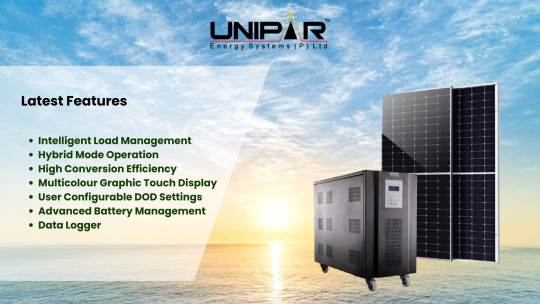
Also Read: https://unipar.in/
Reach Us: 9035024760 or [email protected]
Introduction
In today's energy-conscious world, solar power is more than just a green alternative—it's a smart investment. But to truly maximize the efficiency of your solar power system, using the right equipment is essential. One key component that can significantly boost your system's performance is a Solar PCU with MPPT (Maximum Power Point Tracking) technology.
What Is a Solar PCU?
A Solar PCU (Power Conditioning Unit) is an integrated device that manages power flow from solar panels, batteries, and the grid. It combines the functions of a solar charge controller, inverter, and grid charger—making it a one-stop solution for solar energy management.
Why MPPT Technology Matters
MPPT stands for Maximum Power Point Tracking, an advanced technique used to optimize the power output from solar panels. Unlike traditional PWM (Pulse Width Modulation) controllers, MPPT continuously tracks and adjusts to the panel's most efficient voltage and current levels, even during cloudy conditions or temperature fluctuations.
Benefits of MPPT:
30% More Efficient: Extracts up to 30% more power than PWM charge controllers.
Faster Charging: Improves battery charging speed and reduces downtime.
Better Low-Light Performance: Delivers consistent power even in variable weather.
Key Benefits of an MPPT Solar PCU
Higher Efficiency & Output MPPT ensures your solar panels operate at their optimal power point, resulting in higher energy harvest.
Extended Battery Life With intelligent charging, MPPT helps prevent battery overcharging or deep discharging.
Reduced Grid Dependency A solar PCU prioritizes solar power usage, using grid electricity only when necessary—lowering your monthly bills.
Integrated Functionality Combines solar inverter, grid charger, and charge controller in one unit, saving space and simplifying installation.
Smart Energy Management Some models come with LCD displays, remote monitoring, and programmable settings for better control.
Choosing the Right MPPT Solar PCU
When selecting a solar PCU, consider the following:
System Size Compatibility: Match the PCU’s capacity (in kVA or watts) to your solar panel array and battery bank.
MPPT Voltage Range: Ensure the voltage range supports your solar panel configuration.
Battery Type Support: Look for compatibility with lithium, lead-acid, or gel batteries.
Brand Reputation: Choose reliable brands with good after-sales service.
Warranty & Support: A longer warranty period reflects product reliability.
Conclusion
Upgrading to an MPPT Solar PCU is one of the most effective ways to enhance the performance of your solar system. It not only increases energy yield but also ensures better power management, longer battery life, and a greater return on your solar investment.
#solarpower#solar energy#solar inverter#best inverter#greenenergy#inverter battery#inverter ac#online ups#sustainablefuture#solar system#solar power#solarballs#solarpunk#solar panel#mppt#MPPT charge controller
0 notes
Text
Elevating Energy Solutions: EASUN POWER's High Performance Solar Inverters
In the rapidly evolving photovoltaic inverter industry, EASUN POWER stands out with its commitment to innovation and quality. Their high-performance solar inverters are designed to optimize energy conversion, ensuring maximum efficiency for solar power systems.
EASUN POWER focuses on providing reliable and durable products that meet industry standards. With advanced technology and user-friendly designs, these inverters contribute significantly to the growth of renewable energy solutions.
Investing in EASUN POWER's high-performance solar inverters means investing in a sustainable future. Their exceptional customer service and support further enhance the overall experience, making them a trusted choice for both residential and commercial solar projects.
Join the movement towards a greener planet with EASUN POWER's high-performance solar inverters, where quality meets sustainability.
#energy conversion#renewable energy#photovoltaic#sustainability#commercial solar#quality#innovation#EASUN POWER
0 notes
Text
How To Convert Ordinary Inverter To Solar Inverter?

With the development of solar technology and the decline in the price of solar modules, more and more households and small commercial users are beginning to pay attention to how to upgrade the existing ordinary inverter system to solar system. Compared with traditional inverters that can only work during power outages, solar inverters can not only continuously power electrical appliances during the day, but also significantly reduce electricity bills, with advantages such as environmental protection, high efficiency, and long-term economic benefits. So, can ordinary inverters be converted into solar inverters? What equipment is required? How to operate specifically? This article will give you a systematic analysis.
Difference between solar inverter and ordinary inverter
Difference in working power supply:
The main function of ordinary inverters is to convert direct current (DC) in batteries into alternating current (AC), and only provide emergency power supply during power outages. Solar inverters are designed to connect to solar panels, which can directly convert DC from the sun into AC, and continuously power the load during the day.
Can it run independently:
Ordinary inverters rely on mains charging and cannot run alone. Solar inverters can be completely independent of the mains, and can work with only solar energy and batteries, and can even feed back excess power to the grid.
Different energy management capabilities:
Solar inverters generally have built-in solar charge controllers, which can intelligently manage the battery charging process to prevent overcharging, over-discharging, reverse current and other problems, while ordinary inverters usually do not have these functions.
The conversion process requires the purchase of solar panels, solar inverter charger controllers, batteries and other components. The inverter slot is located on the solar charger and can only be connected to the solar inverter charger controller. It is easy for ordinary users to connect a standard inverter to a solar inverter. If there is no inverter, a backup system must be established first.
The benefits of switching to a solar inverter: saving electricity bills, preventing reverse current, easy operation, reducing costs, no need to worry about power outages, and extending the life of solar cells. Among the upgraded accessories, solar panels and solar charge controllers are the most important.
Common types of solar charger controllers: MPPT, PWM
PWM (Pulse Width Modulation) solar controller is a more traditional solar control technology that reduces the voltage of the solar panel to close to the battery voltage. It is low-cost, but cannot make full use of light resources. It is suitable for low-power and small system scenarios.
MPPT (Maximum Power Point Tracking) solar controller tracks the maximum power point of the solar panel and dynamically adjusts the voltage and current input to increase the system efficiency by 20%-30%. It is suitable for users with large battery capacity, sufficient light resources, and who want to make full use of solar energy.
When choosing a solar inverter charger controller, you need to consider functions such as charging current, overload protection, low voltage circuit breaker, and stop reverse current. When purchasing, you also need to consider factors such as budget, battery size, quantity and type, and installation location.
When choosing a solar panel, you need to consider cost, quality, energy efficiency, temperature coefficient, maintenance, size, and material type. Cost is related to many factors. Energy efficiency is one of the key factors. The temperature coefficient affects the operating efficiency. Maintenance can extend the service life. The size needs to ensure sufficient power and installation space. The material type needs to be selected to best suit the solar system. Polycrystalline solar panels are the best choice for residential installations due to their small footprint and high efficiency, while amorphous panels are suitable for those with a lower budget.
0 notes
Text
Robocraft Store
Robocraft is a leading supplier of lithium ion battery (LION Cell Energy) from ahmedabad, india. We offer other electronics accessories like batteries & chargers, electric vehicle spare parts, e-bike motors and controllers, wireless solutions, robot parts, sensors, industrial power supply , ev kits, sensors, stepper motors and controllers, automation control and cnc machine parts.
Our industry provide different batteries like LiFePO4 Battery, Prismatic Battery, Lead Acid Battery and Lithium Polymer Battery.
You can check our website robocraftstore.com or contact us on 9429230946.
#lithium ion battery#mppt charge controller#electric vehicle spare parts#e bike batteries#ebike motor#electric bike charger#lithium battery chargers#volt ebike battery#battery bike charger#controller e rickshaw#wireless solutions#industrial power supply#automation control and cnc machine parts#e-bike motors and controllers
0 notes
Text
48V LiFePO4 Battery: The Ultimate Guide for High-Power Applications
As industries shift toward sustainable energy solutions, the 48V LiFePO4 battery has become a cornerstone for high-power systems. From electric vehicles to solar storage, its superior performance and reliability make it a top choice. This guide explores 48V LiFePO4 technology, including cell configurations, charging protocols, applications, and why it outperforms traditional batteries.
What is a 48V LiFePO4 Battery?
A 48V LiFePO4 (Lithium Iron Phosphate) battery is a high-voltage lithium-ion variant known for its safety, longevity, and efficiency. Unlike standard lithium-ion cells, it uses iron phosphate chemistry, eliminating risks of thermal runaway. Key advantages include:
2,000–5,000+ cycles (vs. 300–500 cycles for lead-acid).
Lightweight design (up to 50% lighter than lead-acid).
High discharge rates (up to 3C continuous discharge for electric vehicles).
Wide temperature tolerance (-20°C to 60°C).
Why Choose a 48V LiFePO4 Battery?
Designed for heavy-duty applications, the 48V LiFePO4 battery offers unmatched performance:
Extended lifespan: 2,000+ cycles at 80% depth of discharge (DOD).
Rapid charging: Supports up to 1C fast charging (e.g., 100A for a 100Ah battery).
Zero maintenance: No need for watering or equalization.
Solar and EV-ready: Ideal for off-grid solar systems, electric forklifts, and e-trucks.
How Many Cells Are in a 48V LiFePO4 Battery?
A 48V LiFePO4 battery typically comprises 15 or 16 cells connected in series. Each cell operates at 3.2V (nominal), so 15 cells × 3.2V = 48V. Higher-capacity packs may use parallel configurations (e.g., 15S7P for 48V 70Ah).

How to Charge a 48V LiFePO4 Battery
Proper charging ensures longevity and safety:
Use a LiFePO4-specific charger: Standard lead-acid chargers may damage cells.
Voltage parameters:
Charge voltage: 54.75V–58.4V (varies by manufacturer).
Float voltage: ~54V to prevent overcharging.
Current limits:
Standard charging: 0.2C–0.5C (e.g., 20A–50A for a 100Ah battery).
Max current: Up to 1C (100A for 100Ah)1.
Temperature range: Charge between 0°C–45°C for optimal performance.
Tip: Pair with an MPPT solar charge controller for solar systems to maximize efficiency.
Key Series of 48V LiFePO4 Batteries
From compact e-bike packs to industrial-grade systems, 48V LiFePO4 batteries come in diverse configurations:
High-Rate Discharge Series (e.g., 48V 100Ah):
Supports 100A continuous discharge for electric scooters and golf carts.
Solar Storage Series (e.g., 48V 200Ah):
Built for PV systems and telecom stations, offering 2,000+ cycles.
E-Truck & Forklift Series (e.g., 48V 30Ah–80Ah):
Rugged designs with stainless steel casings for heavy machinery.
Modular Expandable Packs:
Link multiple batteries in parallel for scalable energy storage.
Applications of 48V LiFePO4 Batteries
Electric Vehicles:
Golf carts, e-bikes, and e-trucks benefit from lightweight, high-power output.
Solar Energy Systems:
Store solar energy efficiently with 95% round-trip efficiency and low self-discharge (3% monthly).
Industrial Equipment:
Power electric forklifts, UPS systems, and mining tools with stable performance in extreme conditions.
Telecom & Off-Grid Solutions:
Reliable backup for GSM base stations and remote solar installations.

FAQs
Q: Can I replace a lead-acid battery with a 48V LiFePO4? Yes! They offer similar voltage but superior lifespan and efficiency. Ensure your charger is LiFePO4-compatible.
Q: Are 48V LiFePO4 batteries safe for indoor use? Absolutely—non-toxic, zero emissions, and fire-resistant even under short circuits.
Q: What’s the cost comparison with lead-acid? Initial costs are higher (2–3x), but LiFePO4 lasts 5–10x longer, reducing total ownership costs.
Conclusion The 48V LiFePO4 battery is revolutionizing industries with its durability, safety, and versatility. Whether for solar storage, electric vehicles, or industrial machinery, it delivers unmatched value.
Ready to upgrade? Explore our top-rated 48V LiFePO4 batteries or learn how to optimize your solar setup.
#battery#best lithium battery#solar inverter#best insert#inverter battery#rack mounted lithium battery#power inverter#lifepo4#best inverter#inverter#48V LiFePO4 Battery
0 notes
Text
Power On the Go: Why You Need a DC to DC Battery Charger from LiFePO4Oz
When you're on the road or off the grid, keeping your batteries charged and ready is non-negotiable. That’s where a DC to DC battery charger from LiFePO4Oz comes in—your ultimate solution for reliable, efficient charging between your vehicle's start battery and your auxiliary battery setup.
What is a DC to DC Battery Charger?
A DC to DC battery charger is designed to safely and efficiently transfer power from one battery (usually your vehicle’s alternator-connected starter battery) to another auxiliary or deep cycle battery. This type of charger is essential when running dual battery systems, especially in 4WDs, campervans, RVs, and marine applications.
Unlike traditional isolators or direct connections, DC to DC chargers ensure a proper multi-stage charging process that matches the specific needs of your secondary battery—particularly important for modern lithium (LiFePO4) batteries.
Why Choose LiFePO4Oz DC to DC Chargers?
At LiFePO4Oz, we offer advanced DC to DC chargers engineered for high-performance and safety, making them ideal for lithium and AGM battery systems. Our chargers include features such as:
Multi-stage charging for enhanced battery life and efficiency
Built-in MPPT solar controller (on select models) for solar integration
Compact and rugged design built to withstand harsh Australian conditions
Automatic input detection (12V or 24V systems)
Full compatibility with LiFePO4 battery systems
Whether you're heading into the outback or setting up your mobile workstation, our DC to DC battery chargers keep your gear powered and your energy system running smoothly.
Perfect for Off-Grid and Mobile Power Systems
A DC to DC charger is a must-have for anyone running an auxiliary battery for fridges, lighting, communication devices, or other gear. It ensures your second battery is charged correctly while driving—without putting your starter battery at risk.
Plus, with integrated solar input available in select models, you can top up your battery via solar even when your vehicle is parked. This hybrid charging capability is perfect for long-term off-grid living or extended remote travel.
Trusted Australian Quality
When you buy from LiFePO4Oz, you’re getting more than just a charger—you’re getting a dependable power solution supported by local expertise and service. We rigorously test our chargers to ensure safety, performance, and seamless compatibility with our full range of LiFePO4 batteries.
Ready to Upgrade Your Setup?
Don’t leave your power needs to chance. Explore our collection of DC to DC battery chargers today and power your adventures with confidence—only from LiFePO4Oz.
0 notes
Text
Solar Charge Controller Market Revenue Analysis: Growth, Share, Value, Size, and Insights
"Solar Charge Controller Market Size And Forecast by 2028
According to Data Bridge Market Research Solar charge controller market size is valued at USD 4.89 billion by 2028 and is expected to grow at a compound annual growth rate of 15.20% for the forecast period of 2021 to 2028.
Solar Energy Regulator Market is proud to announce an exciting expansion of its product line and services, reinforcing its commitment to providing high-quality goods at competitive prices. As a staple in the community, Solar Charge Controller Market has always prioritized customer satisfaction by offering fresh produce, top-tier household essentials, and a wide selection of locally sourced products. With this expansion, Solar Charge Controller Market aims to enhance the shopping experience by introducing new organic options, expanded international food selections, and a more convenient online ordering system. Customers can now enjoy a seamless shopping experience both in-store and online, ensuring Photovoltaic Charge Control Market remains their go-to destination for all their grocery needs. By continuously evolving to meet customer demands, Solar Charge Controller Market reaffirms its dedication to being a trusted and reliable shopping hub for families and individuals alike.
In addition to expanding its product range, Off-Grid Solar Battery Controller Market is enhancing its commitment to sustainability and community engagement. Solar Charge Controller Market has launched several eco-friendly initiatives, including reducing plastic waste, supporting local farmers, and implementing energy-efficient store operations. Customers can expect MPPT Solar Charger Market to introduce more sustainable packaging options and partner with local organizations to promote environmental awareness. Moreover, Solar Charge Controller Market is strengthening its community involvement by hosting charity drives and food donation programs to support those in need. These initiatives reflect PWM Solar Charge Market mission to not only serve as a leading grocery store but also as a responsible corporate citizen. With these improvements, Solar Charge Controller Market continues to be the preferred shopping destination for quality, affordability, and community support.
Our comprehensive Solar Charge Controller Market report is ready with the latest trends, growth opportunities, and strategic analysis. https://www.databridgemarketresearch.com/reports/global-solar-charge-controller-market
**Segments**
- **By Type**: The solar charge controller market can be segmented by type into PWM (Pulse Width Modulation) and MPPT (Maximum Power Point Tracking). PWM controllers are simpler and more cost-effective, while MPPT controllers are known for their higher efficiency in converting solar energy into electricity.
- **By Application**: Segmentation based on application includes residential, commercial, and industrial sectors. The residential segment is expected to witness significant growth due to the increasing adoption of solar energy systems in households for cost-saving and environmental reasons. The commercial and industrial sectors are also driving the demand for solar charge controllers as businesses focus on sustainability.
- **By Region**: Geographically, the global solar charge controller market is segmented into North America, Europe, Asia Pacific, Latin America, and the Middle East & Africa. Asia Pacific dominates the market due to the presence of key solar energy markets such as China and India. The region's growing focus on renewable energy sources and government initiatives supporting solar power generation are fueling market growth.
**Market Players**
- **Morningstar Corporation**: Morningstar is a key player in the solar charge controller market, known for its high-quality products and advanced technology. The company offers a range of PWM and MPPT controllers for various applications, catering to both residential and commercial sectors.
- **Luminous Power Technologies**: Luminous Power Technologies is another prominent player offering a wide range of solar charge controllers for different capacities. The company focuses on innovation and sustainability, catering to the growing demand for solar solutions in both urban and rural areas.
- **Victron Energy**: Victron Energy is known for its high-performance solar charge controllers suitable for off-grid and grid-connected systems. The brand's MPPT controllers are popular for their efficiency and reliability, making them a preferred choice for residential and industrial installations.
- **Schneider Electric**: Schneider Electric offers a comprehensive range of solar charge controllers designed for different system sizes and applications. The company's focus on digital solutions and energyMorningstar Corporation is a well-established player in the solar charge controller market, known for its high-quality products and advanced technology. The company's range of PWM and MPPT controllers caters to various applications in the residential and commercial sectors. Morningstar's reputation for reliability and efficiency has solidified its position in the market, with a focus on providing sustainable solutions for customers looking to harness solar energy for power generation. With a track record of innovation and continuous product improvement, Morningstar Corporation remains a key player driving market growth and technological advancement in the solar charge controller segment.
Luminous Power Technologies is another significant player in the solar charge controller market, offering a diverse range of controllers tailored for different capacities and applications. The company's commitment to innovation and sustainability aligns with the increasing demand for solar solutions in both urban and rural areas. Luminous Power Technologies' emphasis on catering to a wide range of customer needs and providing reliable and efficient solar charge controllers has contributed to its strong market presence. As the global focus on renewable energy intensifies, Luminous Power Technologies is well-positioned to capitalize on the growing opportunities in the solar energy sector.
Victron Energy stands out in the solar charge controller market for its high-performance controllers suitable for off-grid and grid-connected systems. The brand's MPPT controllers are particularly renowned for their efficiency and reliability, making them a preferred choice for residential and industrial installations seeking optimal energy conversion from solar panels. Victron Energy's commitment to quality and technological innovation has earned it a reputable status in the market, with a strong emphasis on meeting customer needs and delivering sustainable solutions. As the demand for solar charge controllers continues to rise, Victron Energy's focus on providing robust and efficient products places it in a favorable position for further growth and market expansion.
Schneider Electric is a leading player in the solar charge controller market, offering a comprehensive range of controllers designed to cater to different system sizes and applications. The company's focus on digital solutions and energy management aligns with theSchneider Electric is a key player in the solar charge controller market, known for its comprehensive range of controllers designed for various system sizes and applications. The company's emphasis on digital solutions and energy management aligns with the increasing demand for advanced control mechanisms in the renewable energy sector. Schneider Electric's solar charge controllers are equipped with cutting-edge technology to optimize energy conversion and ensure efficient power distribution in both residential and commercial settings. With a strong focus on sustainability and innovation, the company is well-positioned to capitalize on the growing market opportunities driven by the transition towards clean energy solutions globally.
As a renowned player in the solar charge controller market, Morningstar Corporation continues to solidify its position through high-quality products and advanced technological solutions. The company's range of PWM and MPPT controllers caters to a diverse set of applications in the residential, commercial, and industrial sectors, meeting the evolving needs of customers looking to harness solar energy for power generation. Morningstar Corporation's commitment to reliability and efficiency has established it as a trusted provider of solar charge controllers, driving market growth and technological advancements in the renewable energy industry. With a continued focus on sustainability and product innovation, Morningstar Corporation is poised to maintain its competitive edge and contribute significantly to the expansion of the solar charge controller market.
Luminous Power Technologies remains a prominent player in the solar charge controller market by offering a wide range of controllers tailored for different capacities and applications. The company's dedication to innovation and sustainability aligns well with the increasing demand for solar solutions
The market is highly fragmented, with a mix of global and regional players competing for market share. To Learn More About the Global Trends Impacting the Future of Top 10 Companies in Solar Charge Controller Market : https://www.databridgemarketresearch.com/reports/global-solar-charge-controller-market/companies
Key Questions Answered by the Global Solar Charge Controller Market Report:
What is the current state of the Solar Charge Controller Market, and how has it evolved?
What are the key drivers behind the growth of the Solar Charge Controller Market?
What challenges and barriers do businesses in the Solar Charge Controller Market face?
How are technological innovations impacting the Solar Charge Controller Market?
What emerging trends and opportunities should businesses be aware of in the Solar Charge Controller Market?
Browse More Reports:
https://www.databridgemarketresearch.com/reports/global-canoe-and-kayak-rental-service-markethttps://www.databridgemarketresearch.com/reports/global-portable-dialysis-machines-markethttps://www.databridgemarketresearch.com/reports/global-multi-cuvette-spectrophotometer-markethttps://www.databridgemarketresearch.com/reports/global-doppler-ultrasound-systems-markethttps://www.databridgemarketresearch.com/reports/global-rice-based-infant-formula-market
Data Bridge Market Research:
☎ Contact Us:
Data Bridge Market Research
US: +1 614 591 3140
UK: +44 845 154 9652
APAC: +653 1251 984
✉ Email: [email protected]"
0 notes
Text

Power On The Go: Your Life, Unplugged.
Ever felt that panic when your phone hits 1% in the middle of nowhere? Or wished you could keep your laptop alive during that perfect coffee shop work session? Say hello to your new best friend: the Portable Power Bank.
Compact, lightweight, and packing enough juice to keep your devices running all day, this little powerhouse is the ultimate sidekick for adventurers, digital nomads, and anyone who’s ever been stranded without a charger.
Whether you’re camping under the stars, rushing between meetings, or just binge-watching your favorite show on a long flight, the Portable Power Bank has your back. No more hunting for outlets. No more "low battery" anxiety. Just pure, uninterrupted energy wherever life takes you.
Stay charged. Stay unstoppable.
#PortablePower#NeverRunOut#LifeUnplugged#TechEssentials#StayCharged#green energy#ecofriendly#lifepo4 battery#energy storage#solar power#battery storage manufacturers#power supply
0 notes